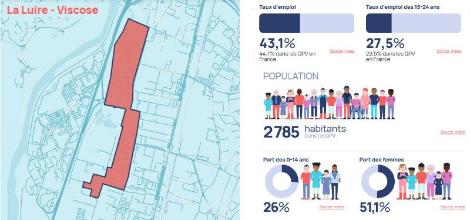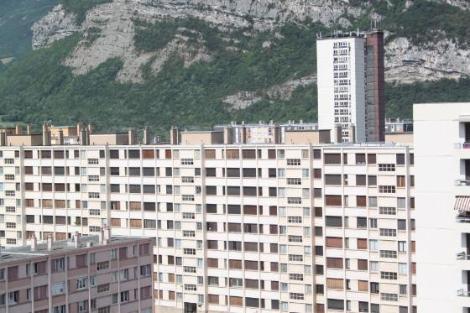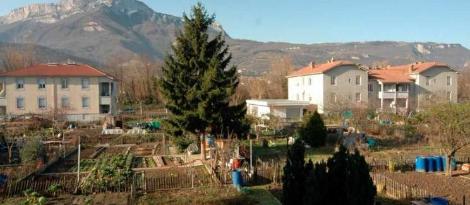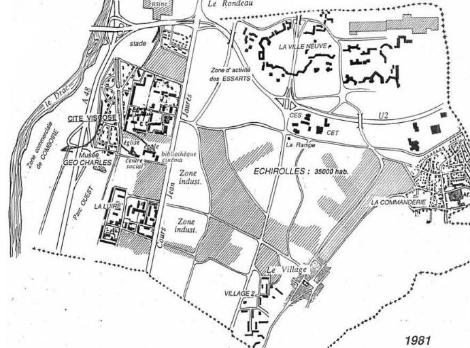Regenerating the city’s priority neighbourhoods #3 : La Luire-Viscose - Grenoble Alpes Métropole
January 2024
Agence nationale de la cohésion des territoires (ANCT)
As part of the Fabrique Prospective, each inter-municipality supported set up a local working group made up of around fifteen stakeholders of its choice. The Ellyx and Oxalis consortium ran four local seminars in each area to help the working groups look to the long term and co-construct a programme of actions to be carried out in the short term around the four themes of the Fabrique Prospective:
-
Amplifying the ecological transition of the QPVs ;
-
The emergence and development of new economic activities based on nature in the inner suburbs;
-
The social link and participation of residents in public life;
-
Strengthening territorial cohesion, i.e. the links between the QPVs and their surrounding areas.
Feedback from the Rhône-Alpes region, within the Grenoble Alpes Métropole urban community
Located in Isère, Grenoble Alpes Métropole (GAM) is made up of 49 municipalities with a population of just over 448,457 in 2020. GAM has ten QPVs spread over five communes, including three in Echirolles: Essarts-Surieux, La Luire-Viscose and Village Sud. In 2018, these three QPVs had a total of 10,341 inhabitants, or around 28% of the commune’s population. Echirolles has been committed to sustainable development since 2000.

In 2020, its Cit’ergie label was renewed for the third time by Ademe. In addition, Echirolles has drawn up a climate and energy plan for the period 2020-2026, focusing on three areas:
1. accelerating the ecological transition ;
2. Adapting the city to climate change;
3. disseminating and promoting the municipality’s action in favour of the ecological transition and adaptation to climate change.
The Luire-Viscose QPV is located to the west of Echirolles. It neighbours the participatory orchard in Parc Pablo Picasso, which will be financed and developed by the city of Echirolles in 2022. La Luire-Viscose is unique in that it comprises two neighbourhoods with their own characteristics: La Luire and La Viscose. The Luire district is a large complex made up of blocks of flats built in the 1960s, separated by green spaces (lawns, trees) and car parks. The landlord, Société pour le développement de l’habitat (SDH), is planning a thermal renovation of the housing stock between now and 2027.

The Viscose district is similar to a garden city. It comprises housing units of four to five dwellings surrounded by green spaces. The landlord, Alpes Isère Habitat (AIH), manages the social housing stock and employs two full-time gardeners. It rents out around 80 plots a year to residents of the district and surrounding area for allotment gardening. The ‘one hundred and twenty toises’ canal links the Luire and Viscose rivers. It supplies an electricity plant at the entrance to the Viscose, as well as the local allotment gardens. Pedestrians can also link the two districts by crossing the Géo-Charles park. The Luire-Viscose neighbourhood includes a nursery school, a primary school and a secondary school, and has been awarded the ‘Cité éducative’ label since 2019.

As part of the Fabrique Prospective, Pierre Labriet, the metropolitan councillor responsible for higher education and research, and Laëtitia Rabih, the metropolitan councillor responsible for solidarity and urban policy, brought together around twenty local players (decentralised government departments, social landlords, the LPO, local associations, municipal and inter-municipal services, the college, the Soleeo employment company (EBE), the compagnons bâtisseurs, etc.). ). Collectively, they have developed a vision based on four key themes: using nature as a lever for ecological transition, social cohesion, economic development and territorial cohesion:
-
the Luire-Viscose district is adapted to climate change: the Luire towers are bioclimatic and forests and urban meadows have been created. All the school playgrounds have been transformed into islands of coolness. The Picasso secondary school offers training in environmental professions and in caring for climate refugees. These courses are innovative, like the ‘Ecoles 42’;
-
The district lives with the living: the towers have been fitted out with facilities to help bats. Black redtails have been (re)introduced into the district, in particular to combat mosquitoes. The greening of the neighbourhood and rooftops and the various facilities (e.g. nesting boxes) encourage wildlife. The local authority has installed a shared henhouse. Some green areas are being experimented with in order to develop wild nature, i.e. without any intervention by the local green space services. A green corridor has been created to link the district to the surrounding areas and encourage soft mobility;
-
The district is a place of production: market gardening areas have been developed in the district. A sheep farm has also been set up. The Viscose textile workshops have been relaunched. Short circuits have been widely developed in the district;
-
The canal is being developed through leisure facilities (barges, dock, fishing facilities, etc.).

To give effect to this vision, the local councillors and stakeholders have identified three key areas for action:
-
make the most of water resources and water points: identify rainwater collection systems that are adapted to the buildings in question, based on existing facilities (external or integrated gutters); equip social housing stock and public buildings with rainwater collectors (eg. Enhance and develop the pond in the Parc Géo-Charles (carry out a hydraulic study, consult residents to identify appropriate facilities: benches, barbecue, etc.);
-
Encourage schools and extra-curricular activities to take place outdoors, i.e. in the nearby natural and cultural environment, where nature is a medium for learning: set up a working group with all the parties involved (teachers, towns, parents’ associations, LPO, etc.); appoint a contact person or a representative from the local community. Organise additional time in nature for families and over longer periods (outings, weekends).
-
Greening the neighbourhood and getting residents involved: organising a public consultation on the use of green spaces and needs; mapping the sites available for developing urban agriculture; identifying solutions for desoiling and renaturalising car parks; experimenting with participatory projects in the Parc Géo-Charles; devising a programme of events in the Parc Géo-Charles.